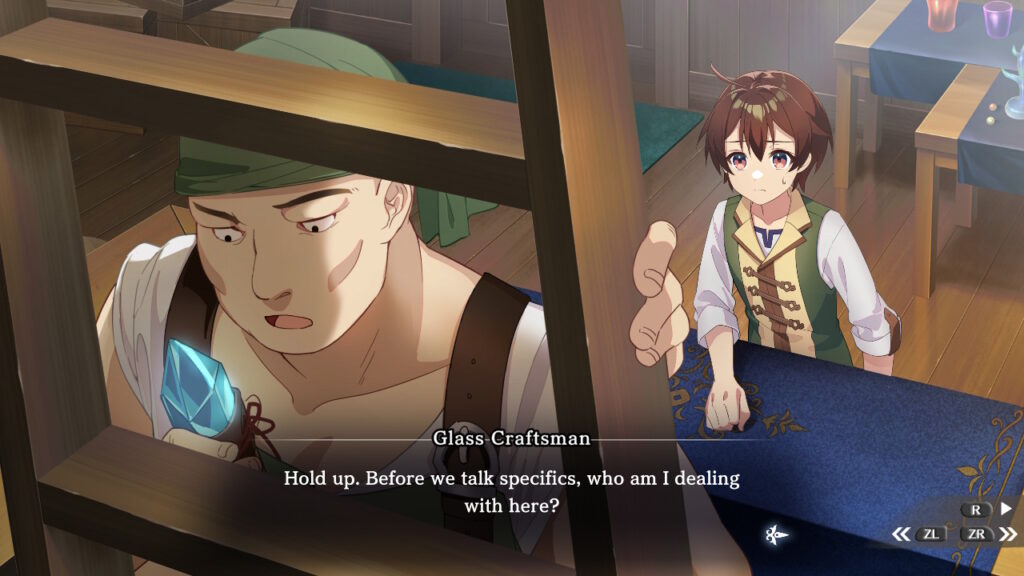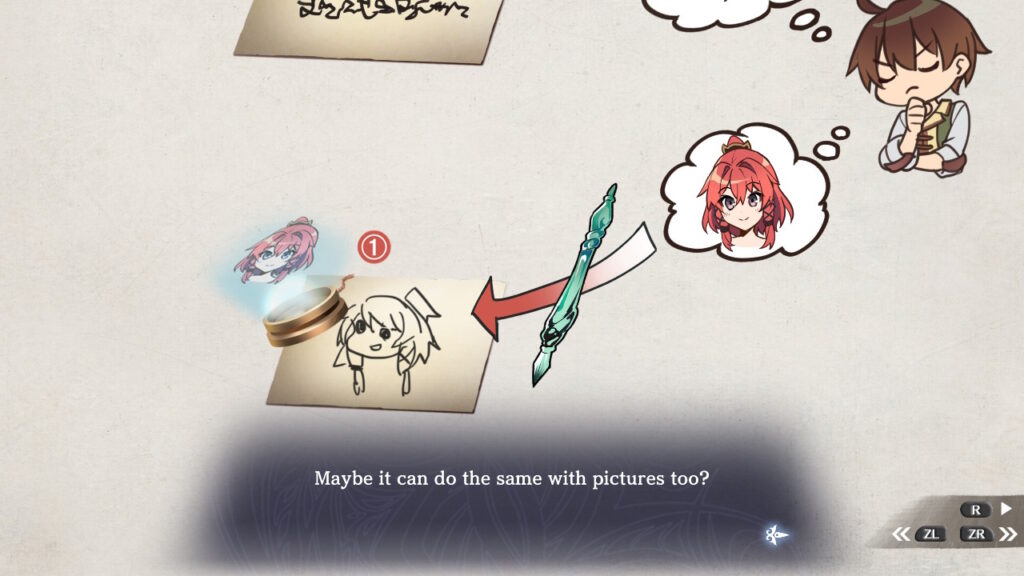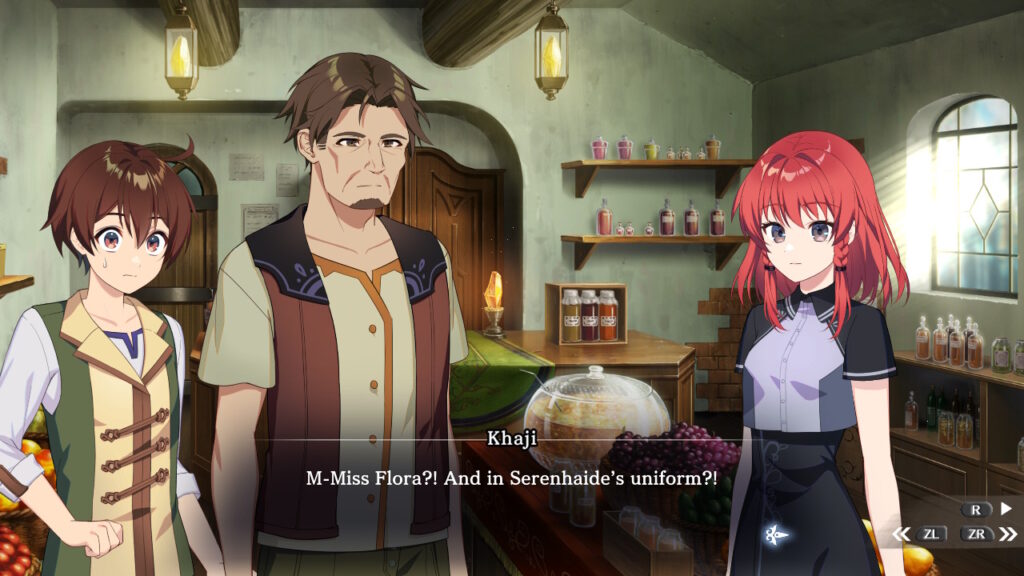
Developer: ALICE IN DISSONANCE
Publisher: Phoenixx
Platform: Switch, PC
Tested on: Switch
fault – StP – LIGHTKRAVTE (Switch) – Review
If you hadn’t heard of ALICE IN DISSONANCE’s fault series of visual novels, you’re probably not alone – we hadn’t either. Visual novels are typically a niche product, of course, and it didn’t help that the fault series lay dormant for seven years, until fault – StP – LIGHTKRAVTE arrived on PC earlier this year. That same title also made the jump to the Switch, with the two previous titles in the series having been ported to the console in previous years. We’ve always preferred the Switch over any other platform for visual novels, as the portability factor helps, so although one of our fellow reviewers already took a look at LIGHTKRAVTE a few months ago, we were eager to take a look at the visual novel on our platform of choice. So what’s our verdict?
Story
Set in the Kingdom of Rughzenhaide, LIGHTKRAVTE introduces us to a technologically advanced society, which has learned to harness the power of mana through a skill known as Manakravte. Our protagonist is a young farm boy who goes by the name of Khaji Oberg. Rather than work on his family’s fruit farm, Khaji’s dream is to become a painter, but unfortunately, his talent -or lack thereof- doesn’t meet the standards of society and he is unable to attain the vocation needed to be able to pursue his dream job. We should mention here that Khaji himself isn’t a very likable protagonist and that has a lot to do with his character motivation, as the main reason that he wants to be a painter is that it allows him to ogle beautiful women for hours as they pose for the portraits that he paints. Despite Khaji’s questionable motive, LIGHTKRAVTE’s story is written well enough and the supporting cast is filled with great characters, which kept us motivated to keep reading, despite occasional awkward pacing. Once the story reaches its second half, things kick up a notch and there is a sense of character growth concerning Khaji. We’re not sure if the character actually evolved or if he simply grew on us but by the time LIGHTKRAVTE began to near its end, we actually had grown quite fond of the little guy.
Of course, there is more to LIGHTKRAVTE’s narrative than Khaji’s quest to become a professional painter, as stretching that plotline out over the course of six hours wouldn’t make for a gripping and enjoyable experience. There is a mystery to solve here, and although we won’t get into the details as that would spoil the enjoyment, rest assured that seeing the puzzle pieces click together is incredibly satisfying. With LIGHTKRAVTE acting as a prequel, we did feel that there was a disproportionate amount of focus on worldbuilding. Normally we would laud how fleshed out the world is here, but LIGHTKRAVTE expects the reader to be familiar with in-universe terminology without explaining it, and it then uses this foundation to layer more worldbuilding on top. The lack of a major antagonist also felt a bit jarring, but overall, we enjoyed dipping our toes in the fault universe.
Because LIGHTKRAVTE is a prequel to fault – milestone one it’s a decent entry point even if you haven’t played any of the two previously released titles, in terms of story at least. We were unfamiliar with the fault universe, so any foreshadowing of events from LIGHTKRAVTE’s sister games was lost on us, but the way worldbuilding is handled here led us to believe that having read milestone one (and two) would make LIGHTKRAVTE a bit more palatable. Now, beyond the 200,000+ word story, LIGHTKRAVTE also offers up an encyclopedia that allows players to quickly find relevant information in case new elements are introduced. This is a welcome addition for newcomers that aren’t familiar with fault’s world, but it’s also a tremendous help for anyone that gets lost in the story after taking a break. It’s a fantastic companion piece to the story, and whenever a new and relevant entry is added to the encyclopedia, you get an on-screen prompt and you can press the Y button to instantly read it. It was a tremendous help to us, but constantly having to switch between the novel and the encyclopedia just to confirm that a “beare” is, in fact, a bear, got annoying after a while.
Graphics
Boasting a gorgeous anime-inspired art style, LIGHTKRAVTE’s visuals turned out to be surprisingly dynamic. Portraits are slightly animated, showcasing expressions, the camera pans and zooms in and out, and the typical visual novel approach of static character sprites talking to each other is broken up by full-screen artwork fairly often. There are over 50 of these so-called “event CGs” to be found here. Within the limitations of the visual novel genre, LIGHTKRAVTE surpassed our expectations with its bells and whistles, but of course, we didn’t expect it to carry the same aesthetic gravitas as an actual fully fleshed-out video game.
Sound
While there is no voice acting present here, LIGHTKRAVTE’s soundtrack does a fantastic job of setting the right mood for the events that unfold on the screen. Although this is a visual novel and the experience should be akin to reading an actual book, the OST is one of the main reasons why ALICE IN DISSONANCE can justify LIGHTKRAVTE’s existence as a digital product rather than having the story printed on paper. We highly recommend keeping the sound on as you are reading LIGHTKRAVTE as the music doesn’t just increase immersion but it feels like an essential tool in conveying the perfect atmosphere.
Gameplay
There are various distinct “flavors” of visual novels, ranging from mystery games that largely rely on visual novel-esque gameplay, like Famicom Detective Club or the Ace Attorney series, to more traditional outings of the genre, which occasionally provide the player with making choices that determine the direction of the story. While LIGHTKRAVTE’s dynamic visuals may give you the impression that there is more to its gameplay than simply immersing yourself in a story by reading it, this is a title that falls into the latter category. In fact, LIGHTKRAVTE is a kinetic visual novel, which means that there aren’t any choices to be made at all. The entire “gameplay” experience comprises reading through the story -which should take most people approximately six hours- and looking at the accompanying visuals. You’re able to fast forward through the story and can re-read the text in a log, but that’s about everything that LIGHTKRAVTE has to offer in terms of interactivity.
Conclusion
Despite LIGHTKRAVTE being a prequel, we couldn’t help but shake the feeling that reading it would be even more enjoyable if we had immersed ourselves in milestone one and milestone two beforehand. Even so, we still enjoyed our time with the visual novel. It’s far from perfect, with awkward pacing, an unlikeable protagonist (at first at least), and an overreliance on familiarity with in-universe terminology, but this is more than made up for by an intriguing mystery and a fantastic audiovisual presentation.
fault - StP - LIGHTKRAVTE (Switch) - Review,








No Comments